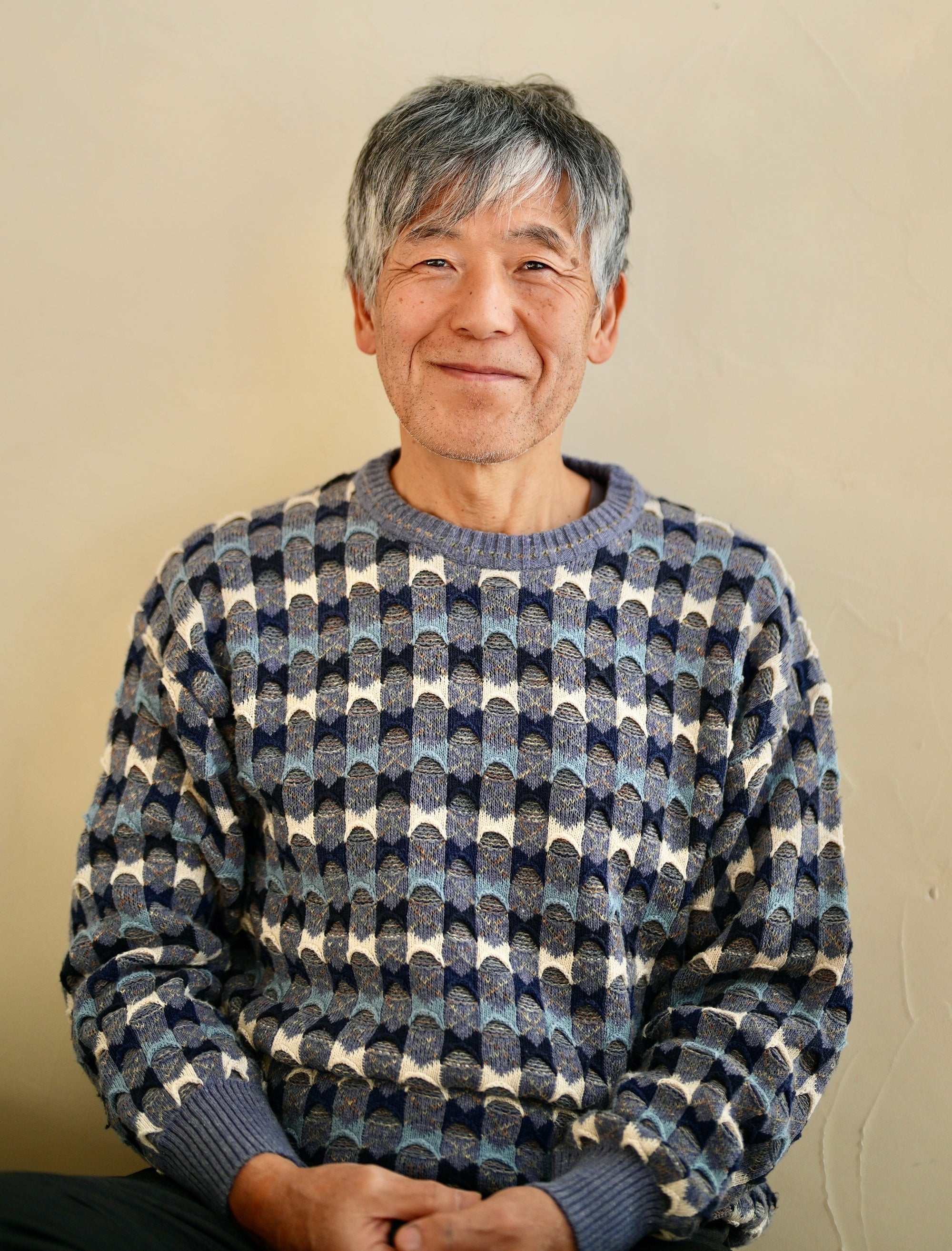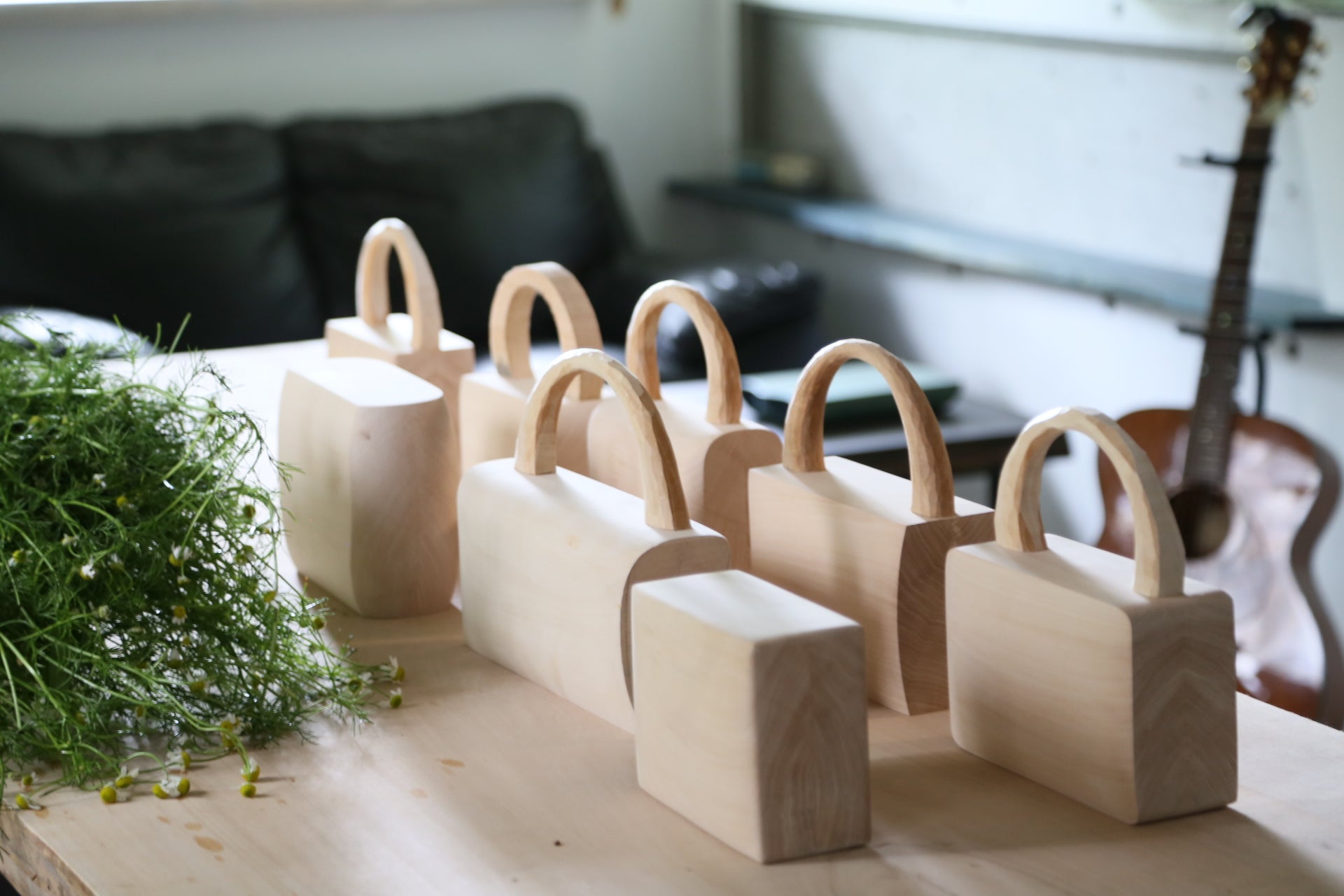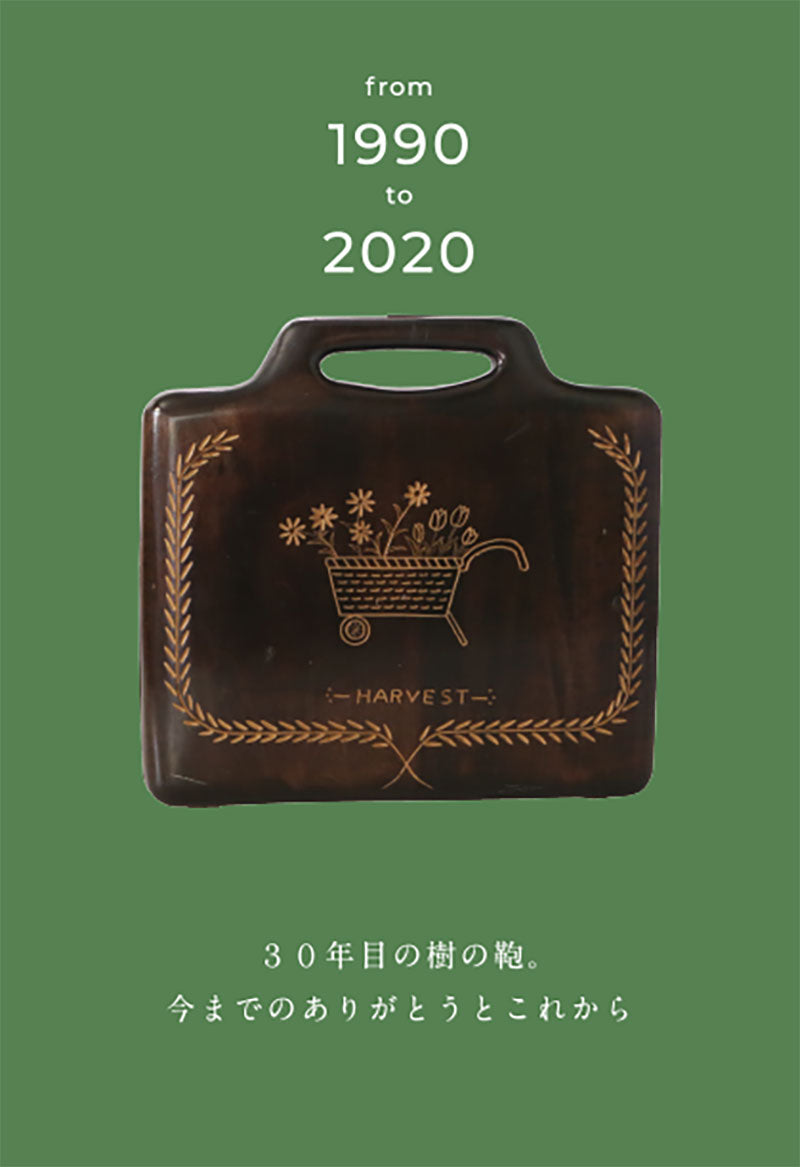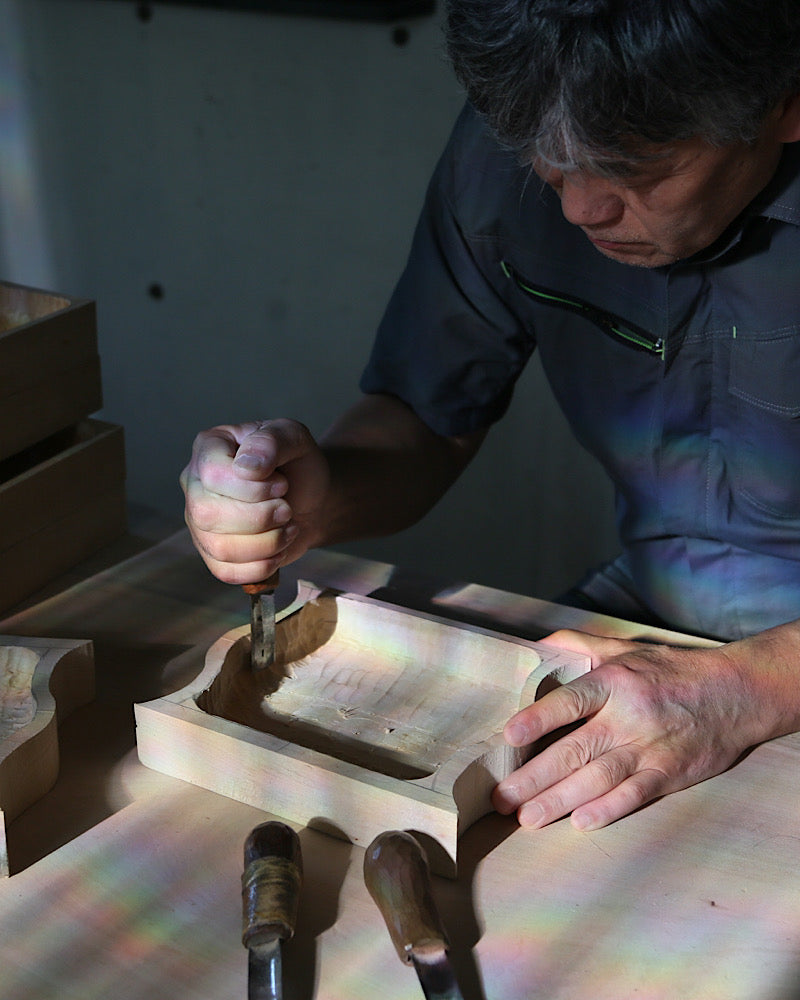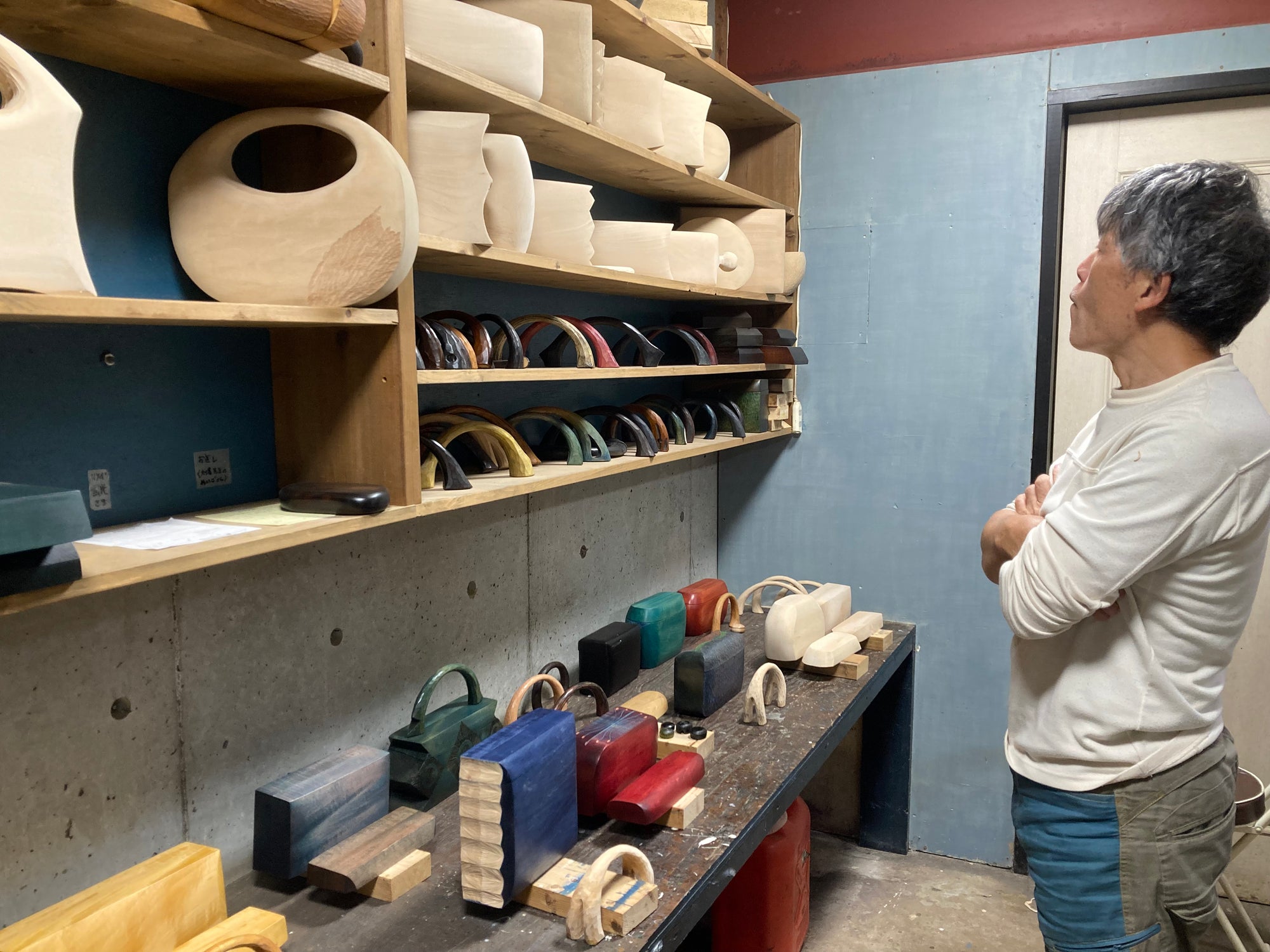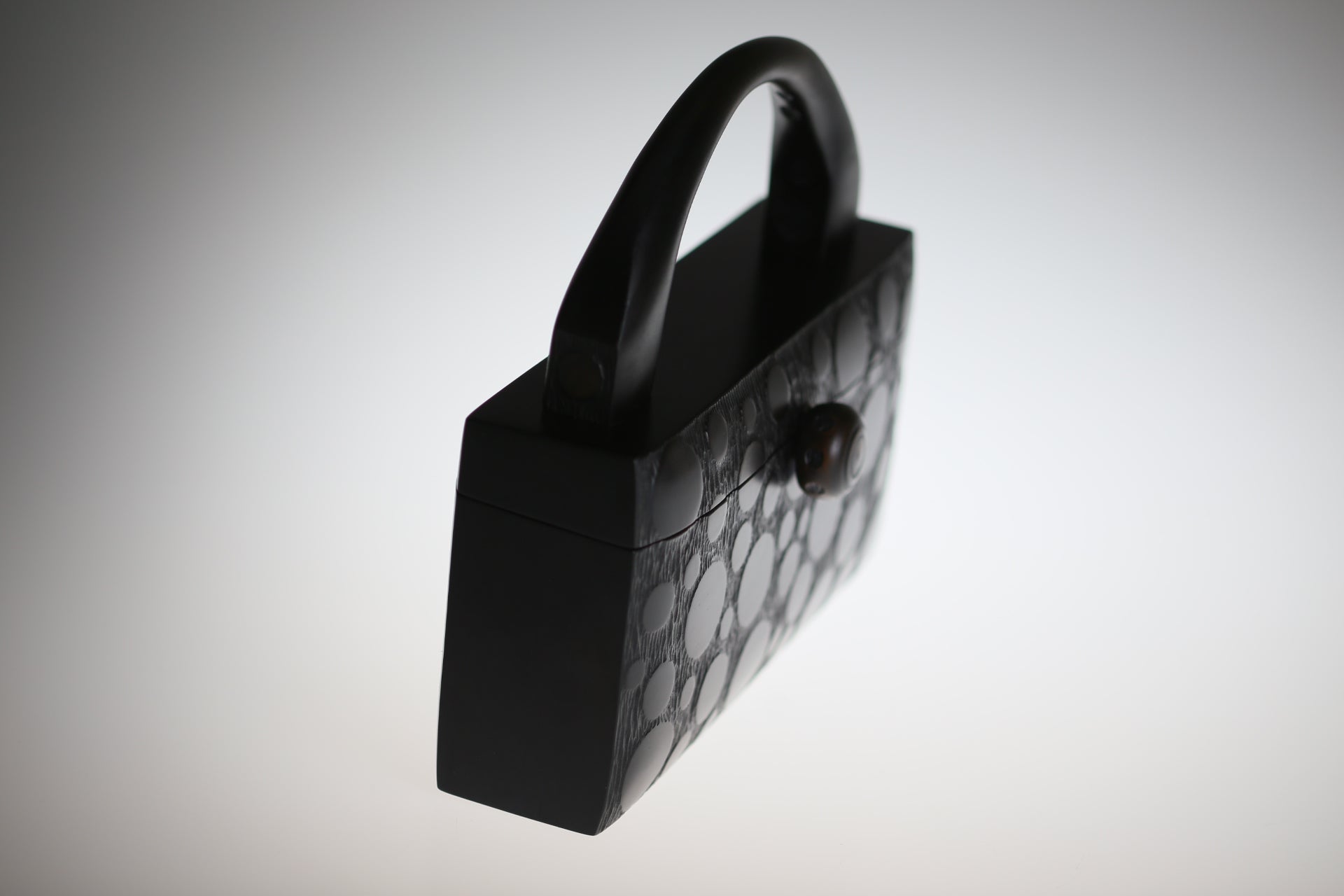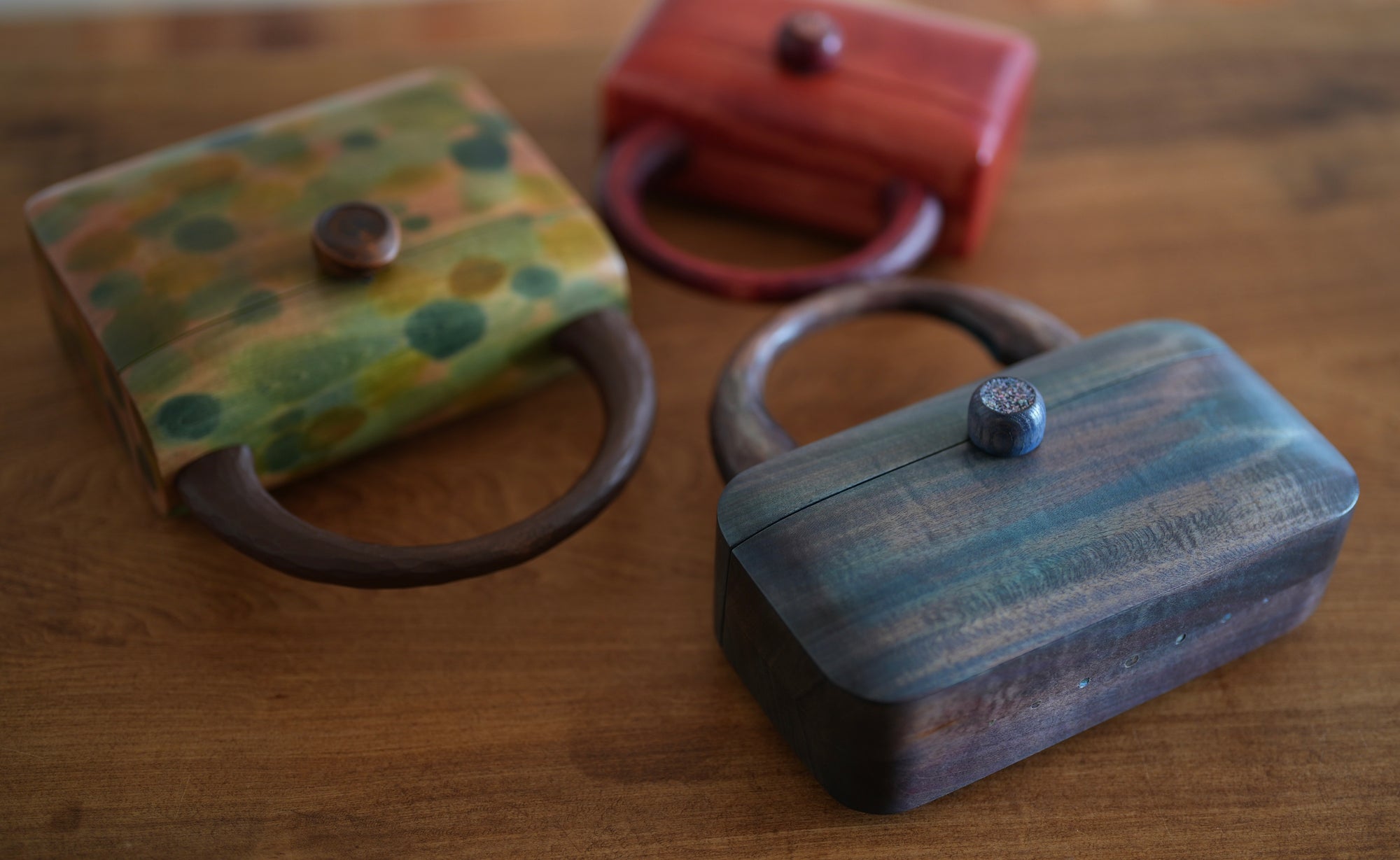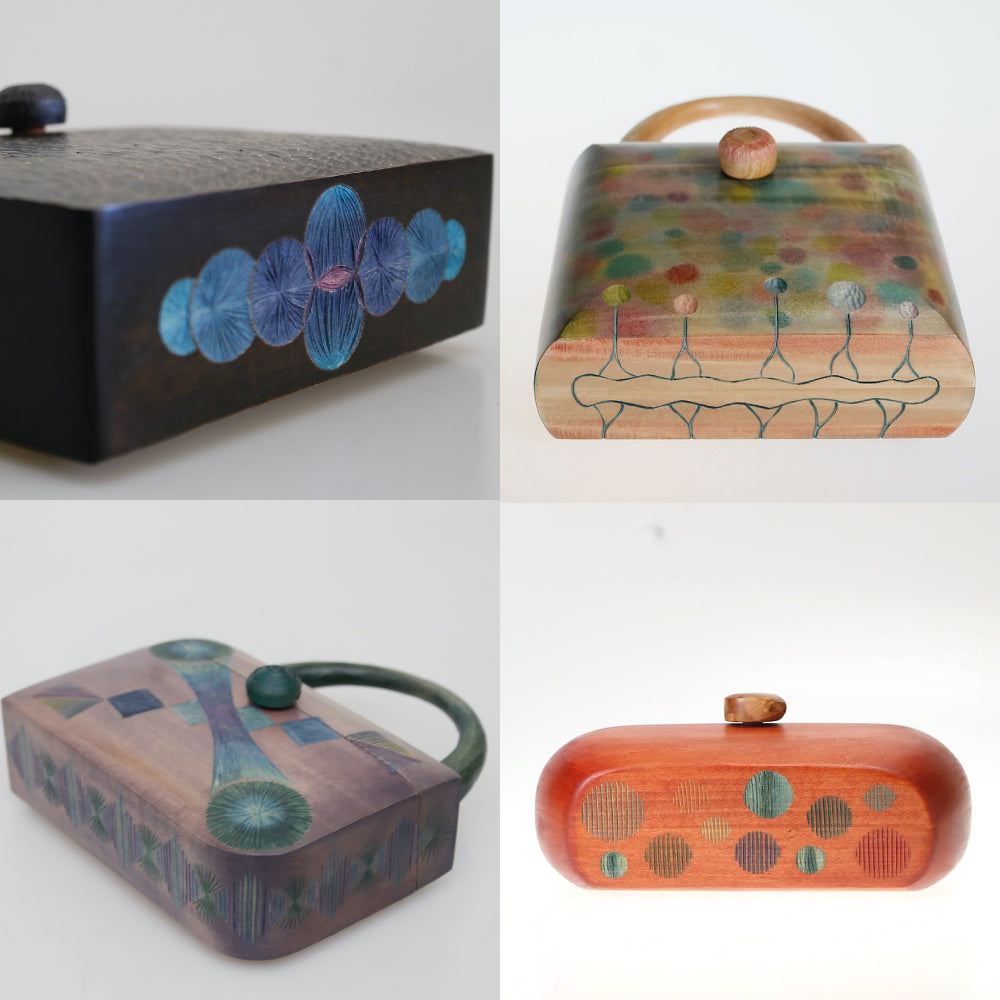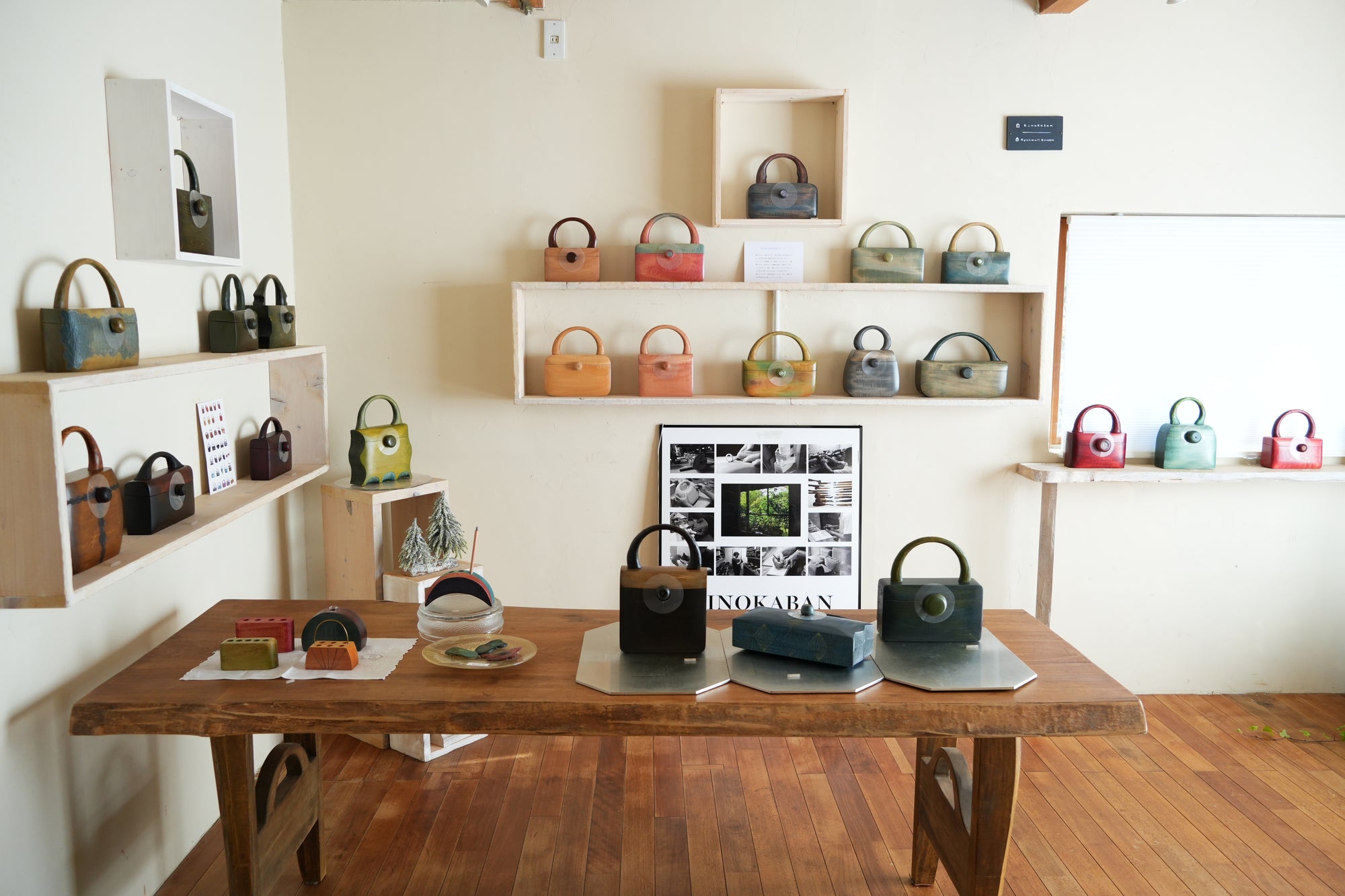Ever since he was a child, Yuuki Kamei has always loved to do things that others did not or had never done before. He always loved to try new things, and one day he decided to quit his job and enter the world of woodcarving.
Of course, this major career change brought financial challenges. But with the devoted support of his wife, he was able to teach himself wood carving and painting techniques. He then decided to create and present something as a special gift to his wife to give form to the deep gratitude he felt in his heart for her. While searching for materials for the gift at a home improvement store, he happened to come across a linden tree and thought to himself, "If I carve this, it would make a bag, wouldn't it?" This led to the creation of "KINOKABAN."
In the beginning, he tried various materials such as aluminum, stainless steel, and brass as well as linden, and also went through a lot of trial and error in the structure and design of the bag itself. While keeping the user-friendliness in mind, he eventually arrived at the current sophisticated manufacturing method, design, and structure of the closure.
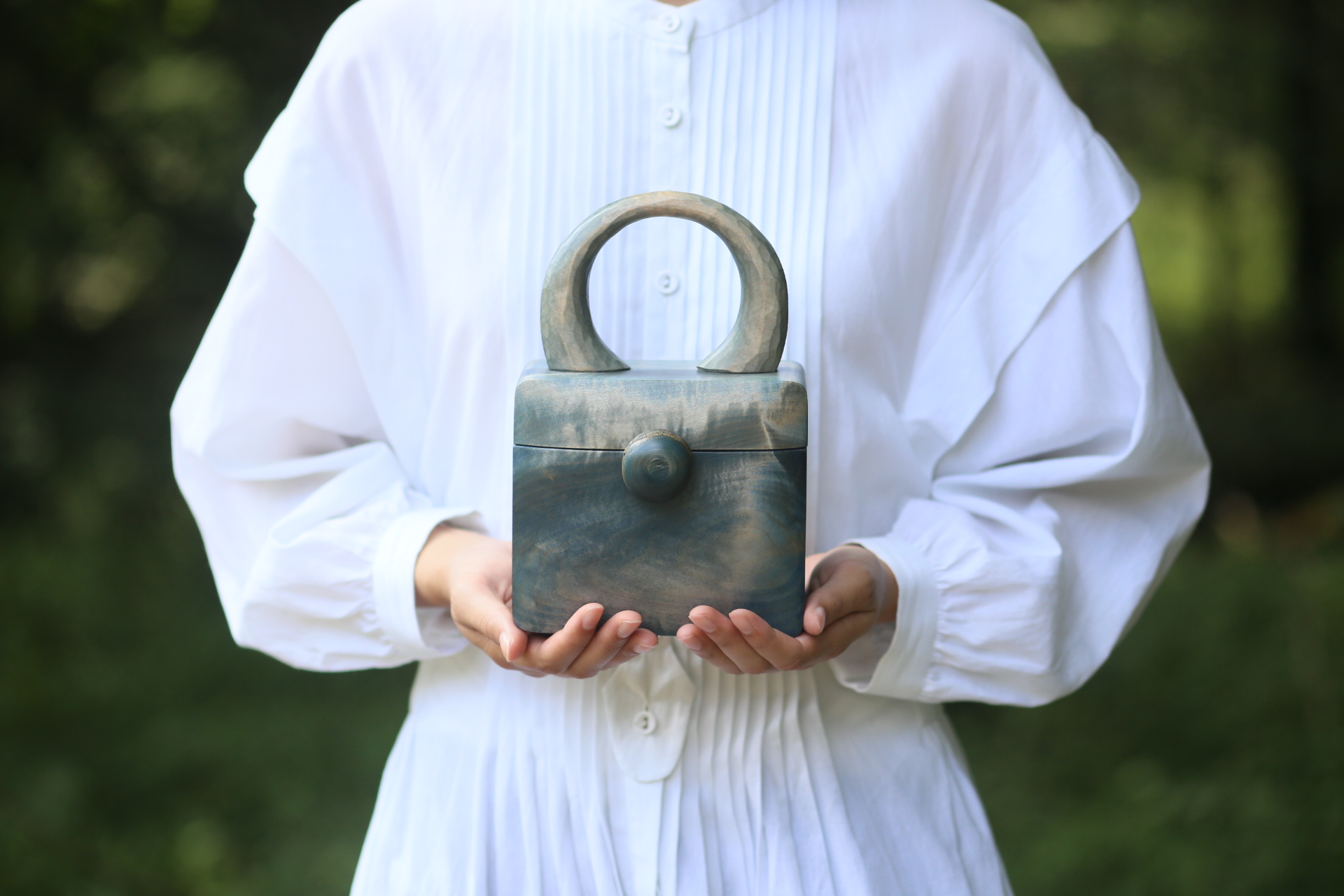 Kinokaban, wooden bag
Kinokaban, wooden bag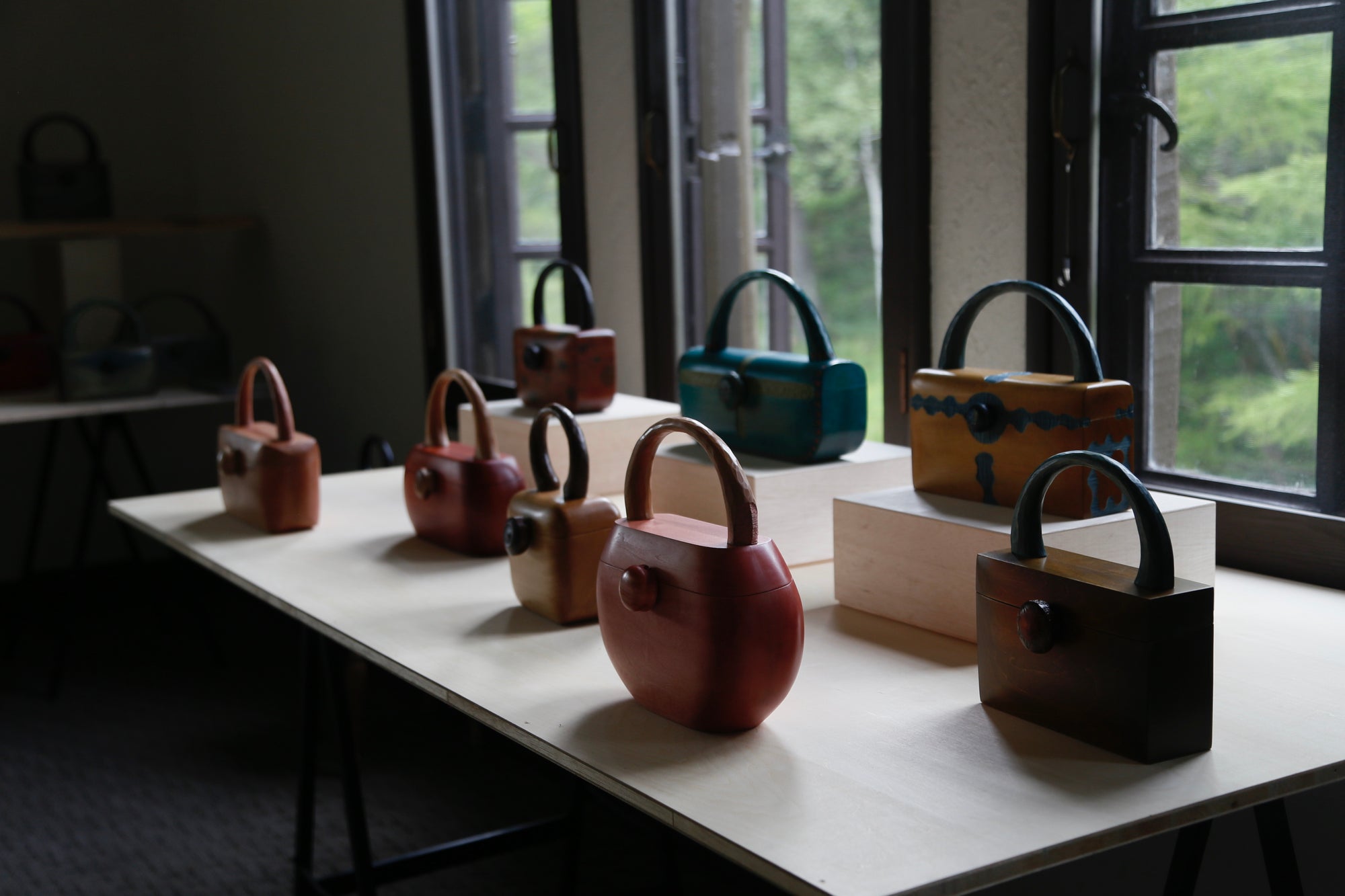 Kinokaban, museum
Kinokaban, museum


